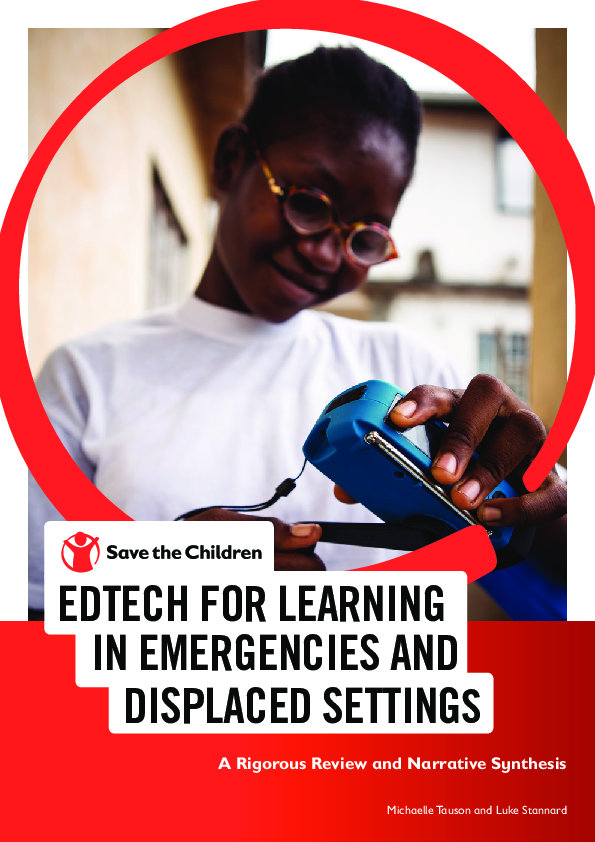
Study: Research
EdTech for Learning in Emergencies and Displaced Settings: A rigorous review and narrative synthesis
Publication year:
2018
English
Format:
pdf (6.8 MiB)
Publisher:
Save the Children
Globally, according to UNESCO (2017), 264 million children of primary and secondary school age are out school. UNESCO also estimates that worldwide roughly 100 million young people are fully illiterate. While data on attendance, enrolment, and literacy can be difficult to gather in fragile and conflict-affected settings, estimates suggest that children in these settings are roughly three times more likely to be out of school than children living in stable, but low-income countries. With roughly 535 million children currently living in countries affected by violence and disasters, many children are at risk of missing out on education.
Due to ever-increasing challenges, increased costs, and decreased funding, governments, international organisations, and civil society have begun to welcome, and even call for, private sector support in the delivery of education. According to UNESCO’s 2017 Global Monitoring Report, the private sector is now a major key player in the delivery of education.
Taking into account the above, the purpose of this report is to build an understanding of ‘what works’ in EdTech to ensure that children can learn in crisis or displaced settings. The field of EdTech is vast and has influenced almost every facet of modern educational delivery. This report will focus on ‘child facing’ EdTech, which refers to technology – both software and hardware – designed directly for use by the child or by a teacher, parent, or facilitator working with a child.
Read full abstract
Authors
View & Download
Document information
Publisher
Authors
Format
Content type
Rights
© Author/Publisher
Share
Link
